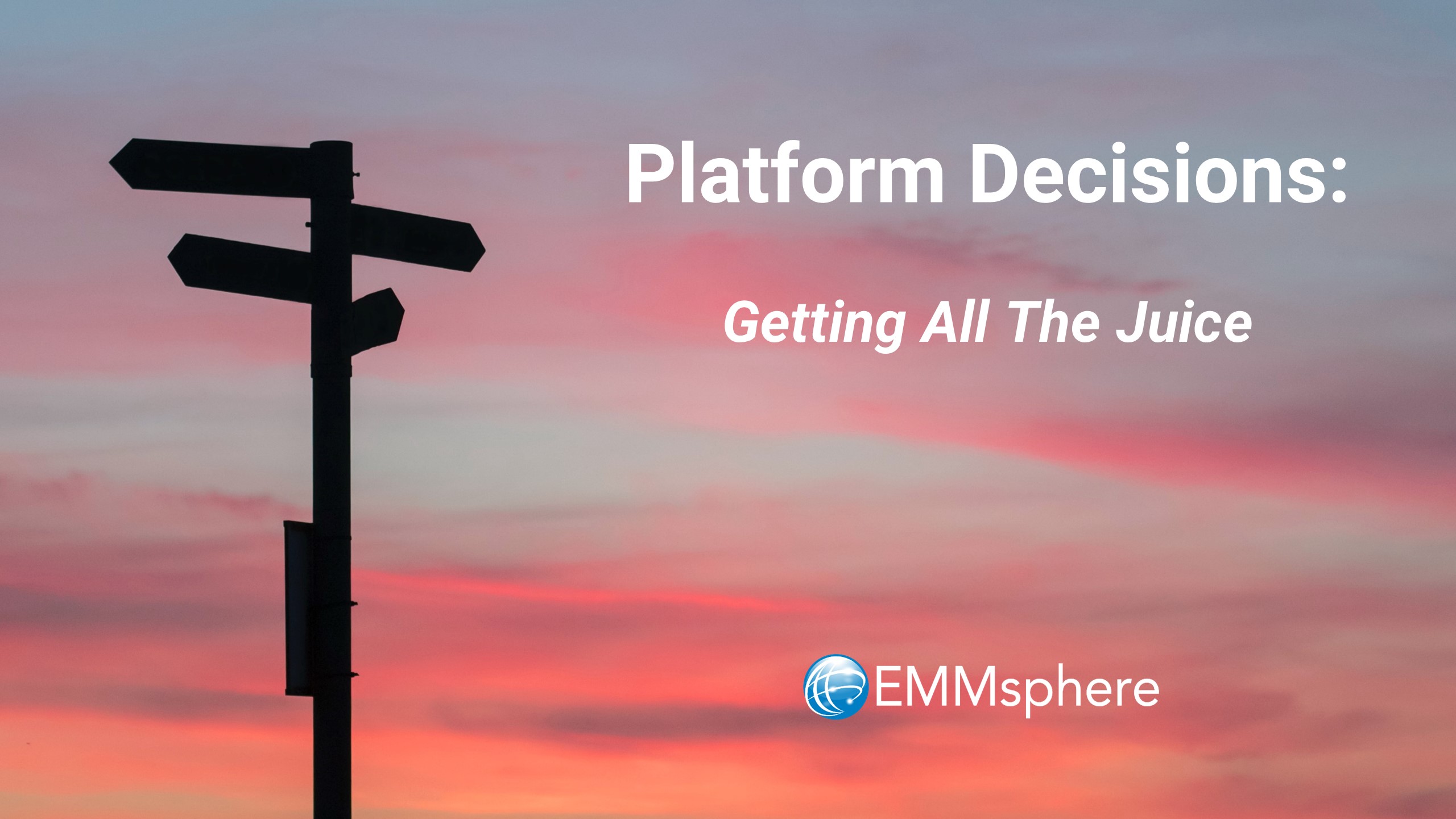
Tips for Building a Switch-Based Future
In our series of posts on platform decisions, we’ve written fairly extensively on a variety of topics that are important to make the case for change, and to formulate a carefully considered platform decision (see links to all posts below).
Throughout all of these posts, we made dozens of observations and offered lots of advice, with “how-to” steps as well. But as we say in the consulting game, what’s the so what?
Well, we certainly hope these posts help you make a platform decision that’s right for you and your organization. But, we also hope these posts help position you strongly for what comes next: being successful with your chosen platform.
To that end, we’ll conclude this series with our “top 3” points of advice for getting all the juice out of your platform decision. These may seem simple, but don’t be fooled — they’re also really powerful!
Embrace the Platform’s Work Management Style
First of all: take advantage of the platform’s specific approach to managing projects and work, which is typically more centralized in some areas, and more decentralized in others.
As we discussed in our earlier posts about platform fit (see links below), platforms are often designed with focus on the work management needs of certain constituencies. Try to get a clear understanding of what those are, and leverage the platform’s distinctiveness in how they provide specific capabilities to specific constituencies to your advantage.
Re-Imagine Processes Within Platform Context
Also: take time to completely re-imagine your marketing processes within the specific context and operating metaphor of your chosen platform. Because, how the platform implements key aspects of work management can fundamentally change how you define your processes.
For example, pay special attention to the platform’s capabilities in the following areas, as they’re very likely to influence your process design:
- Project management capabilities: may require PMs to assume responsibility for managing and trafficking the details/tasks of their own projects, requiring considerable training and change management
- Conditional branching & sub-processes: existing workflows may need to be redrawn in a manner that works within the platform’s branching and/or sub-process methodology
- Resource assignment & management capabilities: may require considerable preparation, training and change management to ensure users log time across the board
- Reporting and dashboards: may offer a wealth of possibilities regarding data output, but may also require diligent monitoring and control of the data input on which such reports will depend
Keep It Simple — Radically Simple
In fact, this is so critically important that we’ll say it again: keep it simple — radically simple!
Streamline processes, empower managers to make day-to-day work decisions, and don’t over-burden users with complex workflows or massive releases of new capabilities:
- Focus on key milestones
- Focus on key points of review/approval
- Deploy and continually expand in “base hits” rather than big bangs
- Govern scope creep and avoid the constant temptation for complexity
- Protect and preserve timelines (push extras to subsequent base hits)
Next Steps
We’ve hardly scratched the surface — so much goes into a carefully considered platform decision! Don’t worry, we’ve got you covered. And, as a next step, we invite you to check out some of our other posts:
- Platform Decisions: When & How to Build a Case
- Platform Decisions: Evaluating Fit
- Platform Decisions: Assessing Viability
- Platform Decisions: Estimating Impact
- Platform Decisions: Testing Assumptions
- Platform Decisions: Differentiators & Productivity Levers
- Platform Decisions: Thoughts About Change
- Platform Decisions: Getting All The Juice
Leave a Reply